
Spoleto Festival USA in Charleston, South Carolina, is one of America's major performing arts festivals. It was founded in 1977 by Pulitzer Prize-winning composer Gian Carlo Menotti, who sought to establish a counterpart to the Festival dei Due Mondi in Spoleto, Italy.

The Tennessee Theatre is a movie palace in downtown Knoxville, Tennessee. The theater was built in 1928 in the 1908 Burwell Building, considered Knoxville's first skyscraper. The theater and Burwell Building were added to the National Register of Historic Places in 1982, and the theater was extensively restored in the early 2000s. The Tennessee Theatre currently focuses on hosting performing arts events and classic films, and is home to the Knoxville Opera and the Knoxville Symphony Orchestra. The theater is managed by AC Entertainment.

The Mark Taper Forum is a 739-seat thrust stage at the Los Angeles Music Center designed by Welton Becket and Associates on the Bunker Hill section of Downtown Los Angeles. Named for real estate developer Mark Taper, the Forum, the neighboring Ahmanson Theatre and the Kirk Douglas Theatre are all operated by the Center Theatre Group.
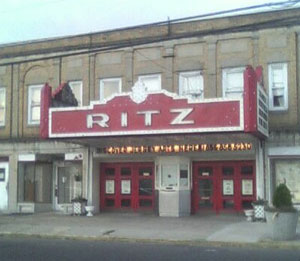
The Ritz Theatre is a theater located in Haddon Township, New Jersey. The venue is owned and operated by The Ritz Theatre Company, a nonprofit organization. The theater was added to the New Jersey and National Register of Historic Places in 2002.
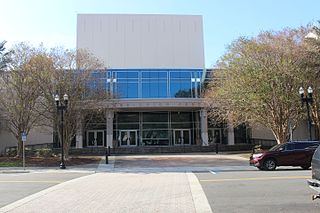
The Jacksonville Center for the Performing Arts (JCPA) is a performing arts center located in Jacksonville, Florida. Situated along the Riverbank, the venue is known as the First Coast’s "premiere riverfront entertainment facility". Originally opening in 1962, the facility was renovated beginning in 1995 until 1997; with a grand re-opening on February 8, 1997. The center consists of three venues: a theatre; concert hall and recital hall. It is home to the Jacksonville Symphony, Jacksonville Symphony Youth Orchestra, and the FSCJ Artist Series.

The Bagdad Theatre is a movie theater in the Hawthorne District of Portland, Oregon, United States. It originally opened in 1927 and was the site of the gala premiere of One Flew Over the Cuckoo's Nest in 1975, and of My Own Private Idaho in 1991.
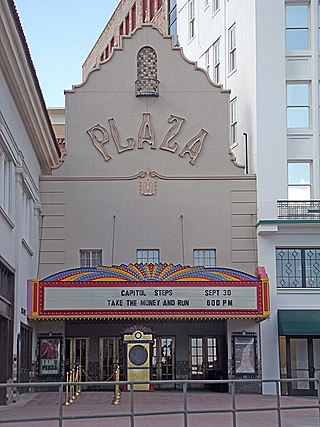
The Plaza Theatre is a historic building in El Paso, Texas, United States, built in 1930. The theater stands as one of the city's most well-known landmarks, and remains operational today. The theatre is a National Historic Building of Significance featuring the 2,050-seat Kendall Kidd Performance Hall, and the smaller 200-seat Philanthropy Theatre. It hosts Broadway productions, musical concerts, individual performers and the annual Plaza Classic Film Festival.

The Dock Street Theatre is a theater in the historic French Quarter neighborhood of downtown Charleston, South Carolina.

An atmospheric theatre is a type of movie palace design which was popular in the late 1920s. Atmospheric theatres were designed and decorated to evoke the feeling of a particular time and place for patrons, through the use of projectors, architectural elements and ornamentation that evoked a sense of being outdoors. This was intended to make the patron a more active participant in the setting.

The Capitol Theatre is a theatre operating in Rome, New York. It opened December 10, 1928 as part of the Kallet chain of movie houses, presenting first run films until it closed in 1974. After extensive renovation, the theatre re-opened in 1985 as the non-profit Capitol Civic Center, offering classic films, live theatrical performances, and concerts.
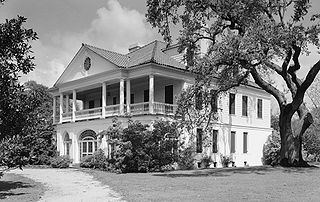
Lowndes Grove, also known as The Grove or Grove Farm, is a waterfront estate built in about 1786 on the Ashley River in Charleston. It is located in the Wagener Terrace neighborhood on a triangular plot of land bordered by St. Margaret Street, 5th Avenue, and 6th Avenue. It was named to the National Register of Historic Places on August 30, 1978.
Chamber Music Charleston is an American 501(c)(3) nonprofit organization dedicated to music education and the performance of chamber music in and around Charleston, South Carolina.

The Capitol Theater was a 700-seat theater in Burlington, Iowa. Opened in 1937, with the first showing being Mark Twain's classic The Prince and the Pauper. The theater was both a movie theater and an auditorium used for performances. The theater closed in March 1977, the final showing was the Stephen King horror classic Carrie.

The State Theatre is a Moderne style cinema in Red Bluff, California, USA. It was built in 1945-46 to a design by architects Alexander A. and Mackenzie A. Cantin, replacing a theater that had burned two years before. It provided the only public stage in Tehama County until 1991, and was the only cinema until 1993. It is notable as one of the few theaters to be built in the United States during World War II.
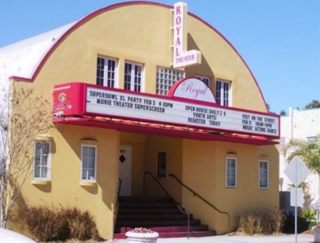
The Royal Theatre was a 700-seat movie theater in St. Petersburg, Florida, serving the local African American community from 1948 to 1966. Located at 1011 22nd Street South – a street known as "The Deuces" – the Royal Theatre was part of a thriving hub of commerce and entertainment, and is featured on the African American Heritage Trail. The building is one of the few remaining Quonset huts in the city, and has been listed in the St. Petersburg Register of Historic Places since 2001.
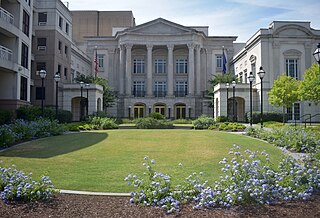
The Gaillard Center is a concert hall and performance venue in Charleston, South Carolina. It opened in 2015 and replaced the Gaillard Municipal Auditorium. Both buildings were named after John Palmer Gaillard Jr., mayor of Charleston from 1959 to 1975.

The Carolina Theatre in Charlotte, North Carolina, is a historic movie house currently undergoing restoration to become a performing arts center and civic convening space. The theatre is owned by the nonprofit Foundation For The Carolinas.

The Embassy Theatre, also known as the Embassy 1 Theatre, is a former movie theater at 1560 Broadway, along Times Square, in the Midtown Manhattan neighborhood of New York City. Designed by Thomas W. Lamb, the theater opened in 1925 on the ground floor of 1560 Broadway, the headquarters of the Actors' Equity Association. While no longer in use as a theater, the space is preserved as a New York City designated landmark, and it continues to operate as a store.

The Orpheum Theater, formerly the Sioux Falls Community Playhouse, is a historic theater at 315 North Phillips Avenue in downtown Sioux Falls, South Dakota. It is the oldest theater in Sioux Falls and was listed on the National Register of Historic Places in 1983. Originally, it hosted vaudeville performances, and briefly served as a movie theater before being converted again into a stage theater, which it remains today.
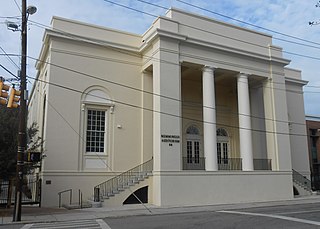
Memminger Auditorium is a live performance and special events venue in Charleston, South Carolina.





















